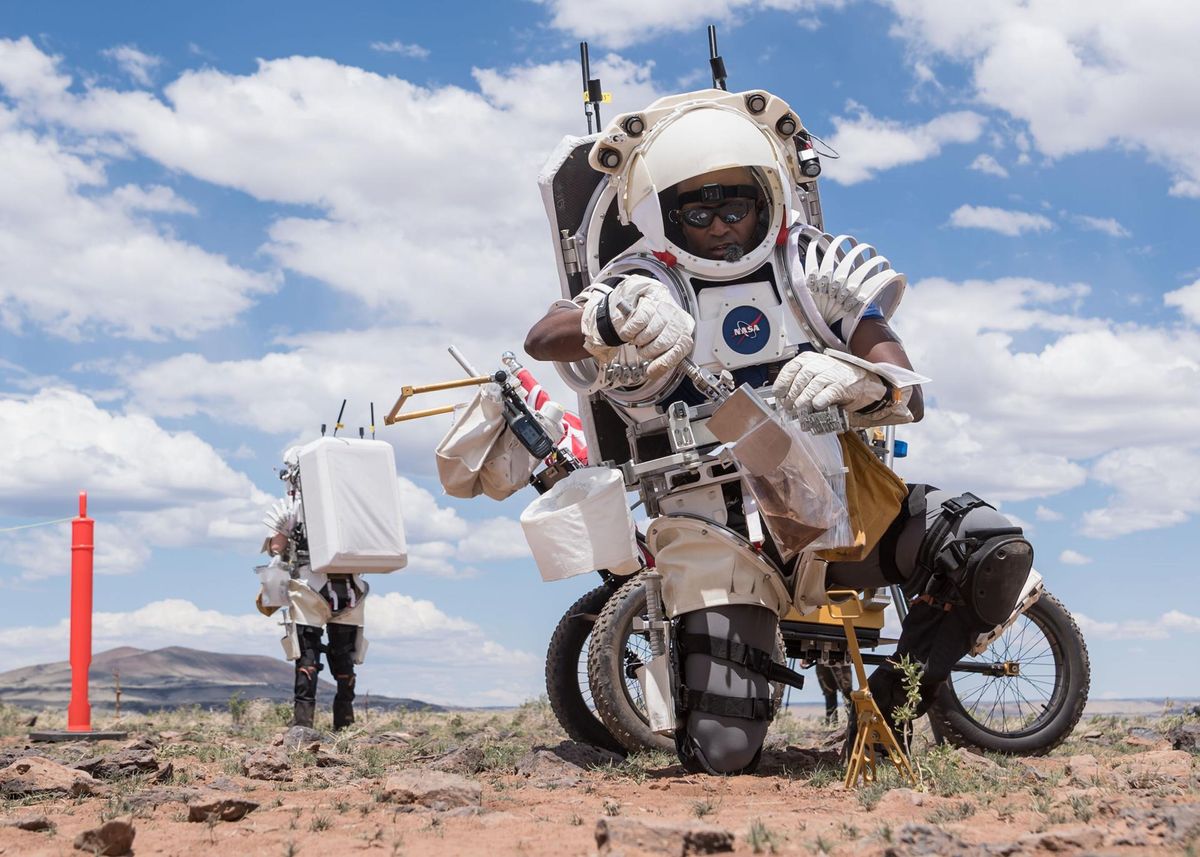Science
Related: About this forumNASA astronauts practice 'moonwalking' in the Arizona desert (photos)
By Meredith Garofalo published 22 hours ago
And we're not talking about Michael Jackson style.

NASA astronaut Andre Douglas raises an American flag as NASA astronaut Kate Rubins looks on during their first simulated moonwalk in a week-long field test consisting of four simulated moonwalks and six advanced technology runs in the San Francisco Volcanic Field in Northern Arizona on May 13, 2024. (Image credit: NASA/Josh Valcarcel)
Moonwalking in the Arizona desert?
No, it's not a remake of Michael Jackson's signature move; it's a training exercise for NASA astronauts that will be part of the future Artemis Program of missions to the lunar surface.
The week-long expedition across the San Francisco Volcanic Field near Flagstaff, AZ, will give NASA astronauts Kate Rubins and Andre Douglas the opportunity to enact moonwalk scenarios in replica spacesuits on a landscape that's similar to the moon.
Throughout the training, the team will rehearse lunar operations from start to finish and will be supported by NASA engineers and field experts on the ground and virtually with a team of flight controllers and scientists at NASA's Johnson Space Center in Houston.

NASA astronaut Andre Douglas collects soil samples during the first in a series of four simulated moonwalks in the San Francisco Volcanic Field in Norther Arizona on May 13, 2024. (Image credit: NASA/Josh Valcarcel)
More:
https://www.space.com/nasa-astronauts-artemis-2-moonwalk-arizona-desert
liberalla
(10,018 posts)Thanks for the link and photos!
PJMcK
(22,886 posts)I wonder how they simulate the 1/6 gravity if at all. The backpacks are probably lighter than the real things. Still, do they have any air conditioning in their suits? It could get pretty hot in the desert. Also, do the orange pylons indicate where their spacecraft would be? It kind of looks like that.
I remember the first Moon landing clearly. We watched on our black and white TV in the family room; color would've been irrelevant as the camera on the Eagle was B&W. It was an incredible sight for this kid! Since then, I've been a life-long spacenik and YouTube has been a great resource for my interests. NASA and its international counterparts have accomplished incredible science since those early days!
The NASA program was at its height as I was growing up. (At the time, NASA's budget was about 5-6% of the national budget! Today it's a small fraction of 1%.) We watched many of the launchings on TV. Several of the Gemini missions were important enough for my elementary school to have everyone watch on TVs in the cafeteria. Apollo 11 was the culmination of the endeavor for many Americans and their interest immediately waned until the near-tragedy of Apollo 13. After that exciting success, there were 4 more Apollo missions but they were greatly ignored by the public at large. Other issues, such as the Viet Nam War and the Watergate scandal, dominated the public discourse. A return to the Moon might reignite the public's interest in space exploration.
There's an HBO mini-series Tom Hanks produced called "From The Earth To The Moon." It traces the NASA program from Mercury through Apollo. It is brilliantly produced with excellent writing, terrific acting and directing, expressive music scores, exceptional special effects and historical accuracy. I highly recommend the series if anyone has an interest in the early days of space exploration.